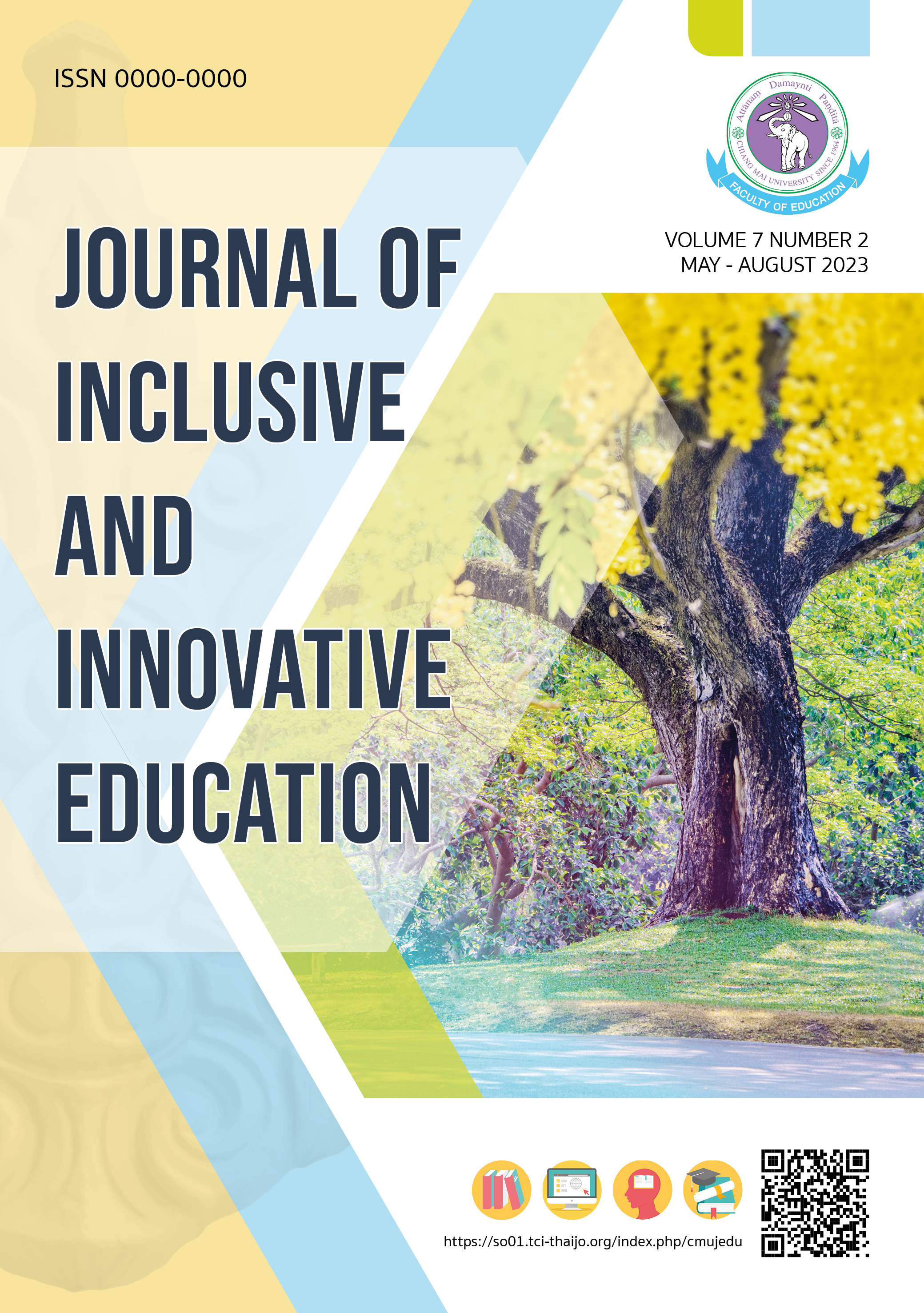Assessment of Mathematical Proficiency Development of Grade 7 Students Using an Automated Feedback System through Machine Learning
Main Article Content
Abstract
The present study was intended to compare the development of mathematical proficiency with the automated feedback system and distinct levels of mathematical proficiency and to investigate the interaction between the automated feedback system and different levels of mathematical proficiency among students affecting the development of mathematical proficiency. In terms of research methodology, an experimental design with a randomized controlled trial was adopted in this study, and the samples were 156 Grade 7 students. The instrument was an online mathematical proficiency test on the topic of Number and Algebra Strand through the web application named “Automated Feedback System through Machine Learning” developed by the researchers. This so-called system could measure two dimensions of mathematical proficiency, namely mathematical procedures (MAP) and structure of learning outcome (SLO). The statistics employed to compare the development of mathematical proficiency and examine the interaction between two aspects was two-way MANOVA.
The results showed that the automated feedback system and different levels of mathematic proficiency had a different effect on the development of mathematical proficiency at a statistical significance level of .01. On the interaction between students’ levels of mathematical proficiency and the automated feedback system affecting their development, such an interaction was discovered to affect the students’ development of mathematical proficiency in the SLO dimension at a statistical significance level of .01. On the other hand, no interaction was found to influence such development in the MAP dimension.
Article Details

This work is licensed under a Creative Commons Attribution-NonCommercial-NoDerivatives 4.0 International License.
หากผู้เสนอบทความมีความจำเป็นเร่งด่วนในการตีพิมพ์โปรดส่งลงตีพิมพ์ในวารสารฉบับอื่นแทน โดยกองบรรณาธิการจะไม่รับบทความหากผู้เสนอบทความไม่ปฏิบัติตามเงื่อนไขและขั้นตอนที่กำหนดอย่างเคร่งครัด ข้อมูลของเนื้อหาในบทความถือเป็นลิขสิทธิ์ของ Journal of Inclusive and Innovative Education คณะศึกษาศาสตร์ มหาวิทยาลัยเชียงใหม่
References
Adams, R.J., Wilson, M., and Wang, W.C. (1997). The multidimensional random coefficients multinomial logit model. Applied Psychological Measurement, 21(1), 1-23.
Adams, R. J., & Khoo, S. T. (1996). Quest: Educational Research : The interactive test analysis system. Camber well, Australia: Australian Council.
Bird M-L, Hill KD, Fell JW, Shute. (2012). A Randomized Controlled Study Investigating Static and Dynamic Balance in Older Adults After Training With Pilates. ACRM Journal 2012, 93(1), 43-9.
Black, P., & Wiliam, D. (1998). Assessment and classroom learning. Assessment in education, 5(1), 7-74.
Bloom, B. S. (1976). Human characteristic and school learning. New York: McGraw-Hill Book Company.
Borg, Walter R.; & Gall, Meredith Damien. (1989). Education research: An Introduction. New York: Longman.
Bradford Hill, A. (1955). Principle of Medical Statis tics. London: The Langet Limited.
Chinjunthuk, S. & Junpeng, P. (2020). Assessment Guidelines for Student’s Personalized Mathematical
Proficiency Development. Journal of Educational Measurement, Mahasarakham University, 26 (1), 47-63.
Cohen, V.B. (1985). A reexamination of feedback in computer-based instruction: Implications for instructional design. Education Technology, 25(1), 33-37.
Hattie, J., & Timperley, H. (2007). The Power of Feedback. Review of Educational Research, 77(1), 81-112.
Jantasuk, S. & Junpeng, P. (2020). Designing Automated Feedback System to Diagnose Students' Mathematical Proficiency Level Through Digital Learning Platform. Journal of Research Methodology, 35(1), 23-45.
Junpeng, P. (2018). Applying for Multidimensional Item Response Theory:MIRT. KhonKaen: KhonKaen University Publishing. [in Thai]
Junpeng, P. et al. (2020). Developing students' mathematical proficiency level diagnostic tools through
information technology in assessment for learning report. Bangkok: Research Administration Division Khon Kaen University. [in Thai]
Junpeng, P., Krotha, J., Chanayota, K., Tang, K. N., & Wilson, M. (2019). Constructing Progress Maps of Digital Technology for Diagnosing Mathematical Proficiency. Journal of Education and Learning, 8(6), 90 -102. [in Thai]
Kanjanawasee, S. (2012). Classical test theory. Bangkok: Chulalongkorn University. [in Thai]
Hakstian. A.R. & Cattell, R.B. (1978). Higher-stratum ability structures on a basis of twenty primary abilities. Journal of Educational Psychology, 70, 657-669.
Krause, Stark & Mandl (2009). The effects of cooperative learning and feedback on e-learning in statistics. Journal of ScienceDirect, 2(1), 158-170.
Mason, B. J., & Bruning, R. (2001). Providing feedback in computer-based instruction: What the research tells us (CLASS Research Report No. 9). Center for Instructional Innovation, University of Nebraska-Lincoln.
Masantiah, J. (2017). Development of a Computer-Based Testing System With Immediate Feedback For Different Student's Ability Levels : Application of Rasch Sirt Model. Bangkok: Chulalongkorn University. [in Thai]
Mohammed, M., Khan, M.B, Mohammed, B. (2016). Machine Learning Algorithms and Applications. Boca Raton: CRC Press.
National Council of Teacher of Mathematics [NTCM]. (2000). Executive Summary Principles and Standards for School Mathematics. Retrieved from http://nctm.org/Standards-and-Positions/Principles-and-Standards/P. Junpeng. [in Thai]
Sarker, I. H., Kayes, A., Badsha, S. , Alqahtani, H. , Watters, P. (2020). Cybersecurity data science: an overview from machine learning perspective. Journal of Big Data, 7(1), 1–29.
Schimmel, B. J. (1983). A meta-analysis of feedback to learners in computerized and programmed instruction. Paper presented at the annual meeting of the American Educational Research Association, Montréal. (ERIC Document Reproduction Service No. 233708).
The Institute for the Promotion of Teaching Science and Technology. (2018). Assessment PISA 2015 Science Reading and Mathemetics. Bangkok: Success Publication. [in Thai]
Thongpanchang, S. (2018). Effects of Different Types of Computer-Based Mxed Feedback on the Numeracy Skill Development of Lowersecondary School Student. Bangkok: Chulalongkorn University.
Vygotsky, L. (1978). Mind in society:The developmental of higher psychological process. Cambridge MA: Harvard University Press.
Wilson, M. (2005). Constructing measures: An item response modeling approach. Mahwah, NJ: Rout ledge.


